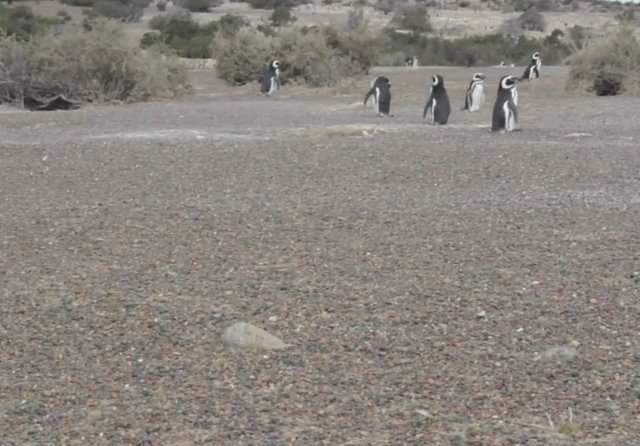Million penguins live on the Patagonian coast, in the Punta Tombo reserve.
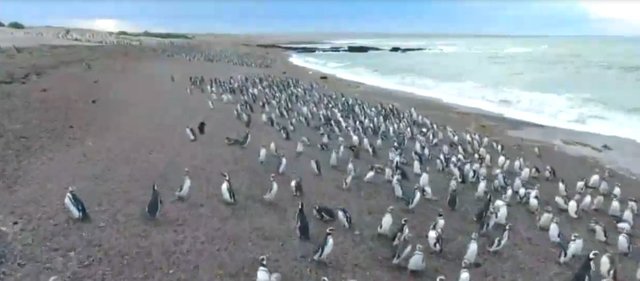
About a million penguins live on the Patagonian coast, in the Punta Tombo reserve, 180 kilometers from Puerto Madryn.
A beautiful and thrilling show. See thousands and thousands of penguins walking among people looking for their nests or their young on the infinite marine beach of Punta Tombo.

They should not be disturbed because if they lose their way they will never find a nest and their young will die.
Friends, but not to play!
The Punta Tombo penguin colony, near the city of Trelew, is home to the largest continental colony of Magellan penguins and receives more than one million specimens that reproduce every season.
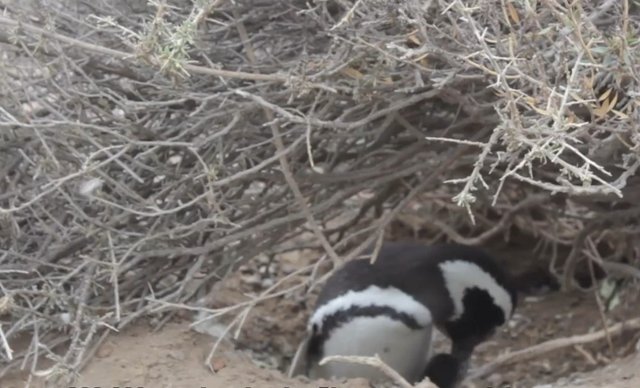
The tourist town of Puerto Madryn, located on the Atlantic, is one of the starting points for visiting the Punta Tombo reserve and seeing the penguins.
Created in 1979 by the government of Chubut (one of the Provinces of Argentina), the reserve allows you to see thousands of these seabirds in their natural habitat, less than a meter away.
The Punta Tombo reserve offers a great show with the arrival of more than 600 thousand penguins to the coast, a unique image.
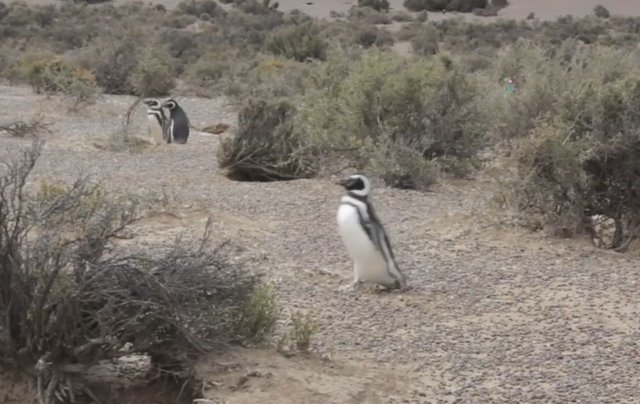
The way to get to Punta Tombo is through excursions by land, which allow you to admire the Patagonian steppe and the fauna of the area. At the end of this path, the first penguin families begin to appear.
Imagine for a day being part of a gigantic penguin colony!
Each family lives in one meter deep caves, built by male penguins to attract females, who arrive at the coast a month later than their male peers. Penguins are experienced swimmers. In water they reach a speed of 24 km / h and can sink up to 80 m below sea level.
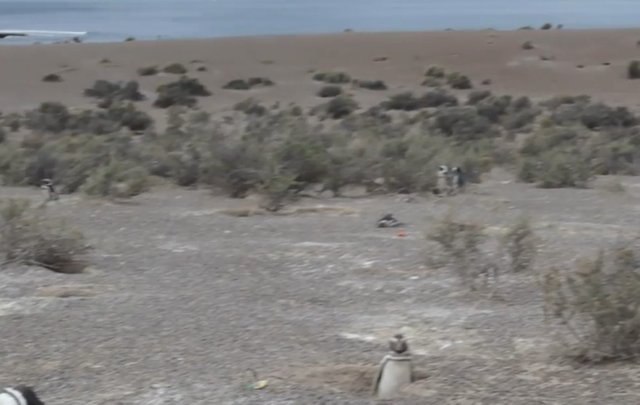
Would the water be cold? they seem to ask themselves before the first thing in the morning.
Depending on the time of year you visit the reserve, you can participate in various events: the arrival of the females and the reproductive cycle in September, the birth of the puppies in November, and a month later, the first forays at sea of the little ones.
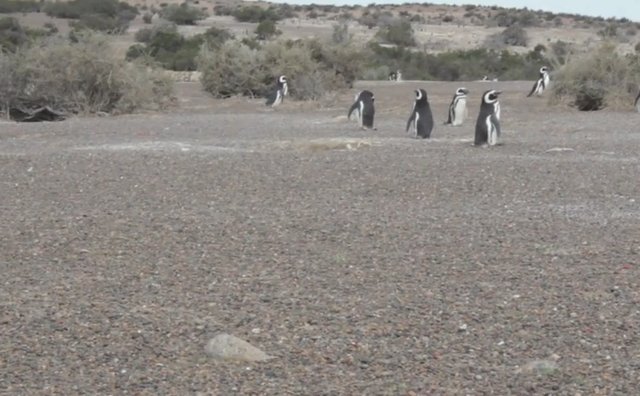
After swimming a visit to the nest to see if everything is under control
Magellanic penguins who meet in Punta Tombo from September to April to nest, mate, incubate eggs and feed their young, offer a unique show on the continent.
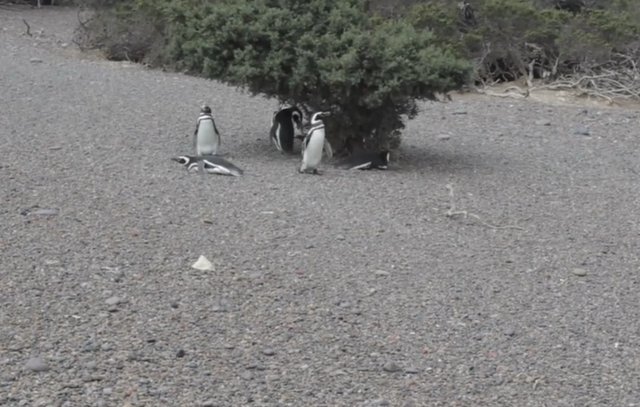
Punta Tombo is one of the most famous and popular places on the coast of Argentine Patagonia. It offers one of nature's most fascinating spectacles: the continental colony of Magellanic penguins.
In addition, Punta Tombo is a paradise for other seabirds who have chosen this place to nest: gray or southern gulls, dung, two species of cormorants, the real and the black neck, antarctic pigeons, and several species of giant terns and procellaries.
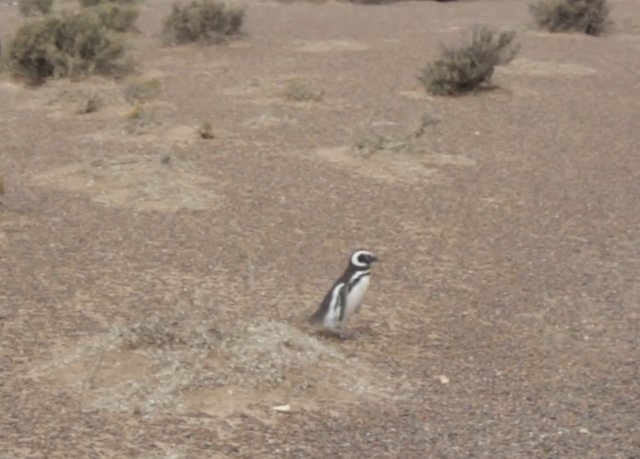
Although they are very friendly with human beings, it is not advisable to get too close to them so as not to make them lose their sense of direction.
The Magellanic penguin can be found from Tierra del Fuego to Brazil (by the Atlantic Ocean) and Peru (by the Pacific Ocean) These distant destinations are reached after a migration to warm waters of more than 6000 kilometers.
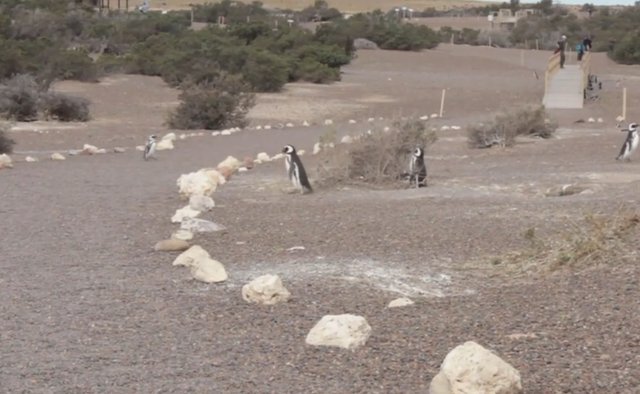
Penguins cannot take flight like other birds but instead they are excellent swimmers.
Between August and September of each year the first males arrive to the area to rebuild the nest, usually in the same place they used the previous season, which can be outdoors or under a bush.
As of March, they leave the land and remain in the sea. A large part of the population, and particularly juveniles, migrate north, where they can reach Peru and Brazil.
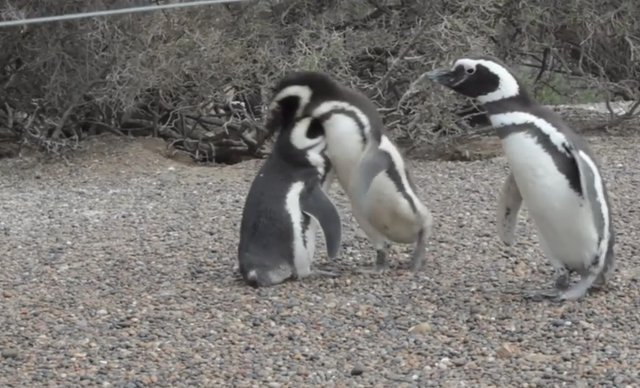
It's time to get out of the water!
At birth, the chicks do not weigh more than 150 grams. and they don't go to the sea until they reach 250 grs.
After the laying of the first egg the males go out to feed the sea and also worry about bringing more vegetation to the nest.
The second pigeons are generally smaller and less likely to survive (30% survival), this is usually due to lack of food due to commercial fishing that makes it more difficult for parents to find food.
They lay two eggs (exceptionally 3), which are hatched and cared for 30 to 40 days by both penguins, taking turns in order to go looking for food.
